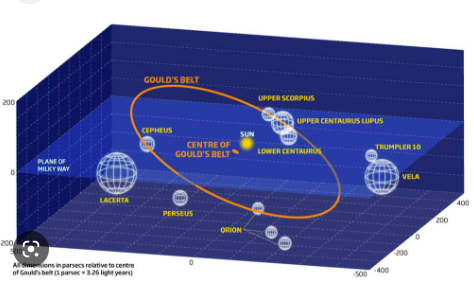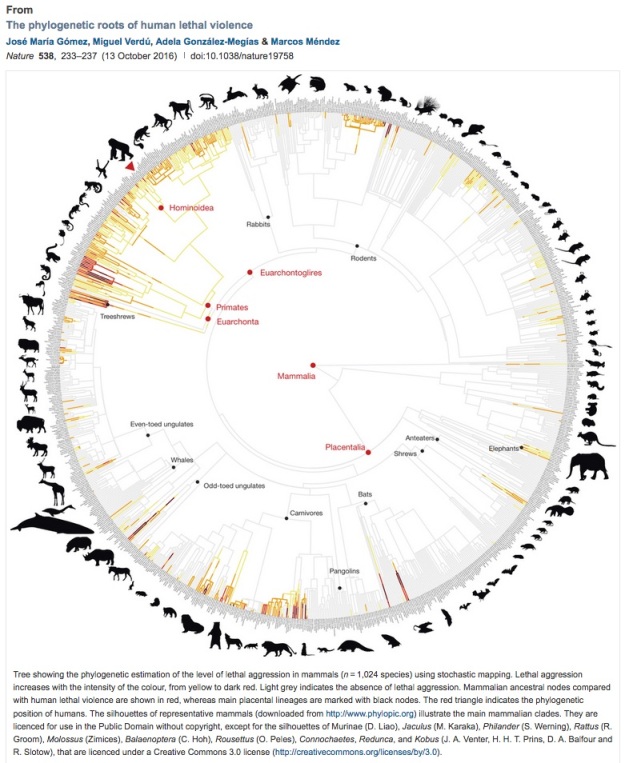29.2 – 27.7 million years ago
Logarithmic History has had a lot of geology and biology lately, not so much astronomy. But all is not peaceful in the heavens.
Benjamin Gould is a nineteenth century astronomer who noted that a lot of bright stars in the sky — especially the bright blue stars that we know are very young — seem to fall along a ring tilted at a 20 degree angle to the Milky Way. This ring has come to be called Gould’s Belt (or the Gould Belt). The Belt is an ellipse about 2400 by 1500 light years across where there has been a recent wave of star formation. Our Sun lies within the belt, somewhat off center; the center lies in the direction of the Pleiades.

The Belt began forming maybe thirty million years ago. We’re not sure what happened. A supernova may have set off a wave of star formation, but it would have to have been a huge one. Or it may be that a gas cloud or a clump of dark matter passed at an angle through our part of the Milky Way, and started stars forming with its shock wave. There are features resembling Gould’s Belt in other galaxies. In any case, the Belt is one of the really striking features of our part of the Milky Way.
Whatever its cause, no one disputes its magnificence. Gould’s belt is the most prominent starry feature in the Sun’s neighborhood, contributing most of the bright young stars nearby. Nearly two thirds of the massive stars within 2,000 light-years of the Sun belong to Gould’s belt. If I were kidnapped by an alien spaceship and taken to some remote corner of the Galaxy, Gould’s belt is what I’d look for to find my way back home.
If you’re in the Northern hemisphere you can look at the sky tonight and see the Milky Way in an arc in the Western sky, stretching from North to South. West of the Milky Way you’ll see some of Gould’s belt, an arc of bright stars running north to south from the Pleiades, through Taurus and the bright stars of Orion, and Canis Major. So tonight look at the stars, and drink a toast if you want, to your ape ancestors, who were just on the cusp of splitting off from monkeys thirty million years ago.


